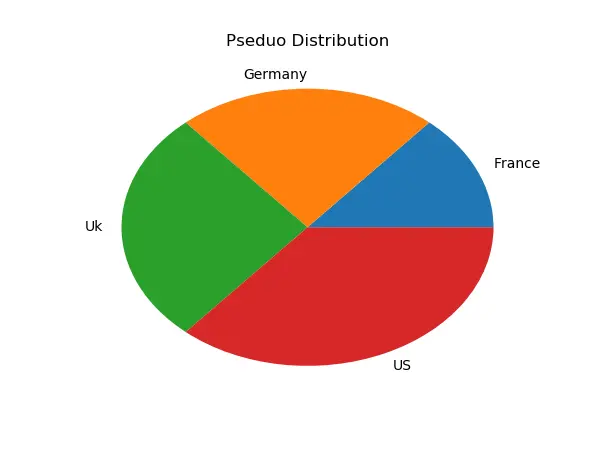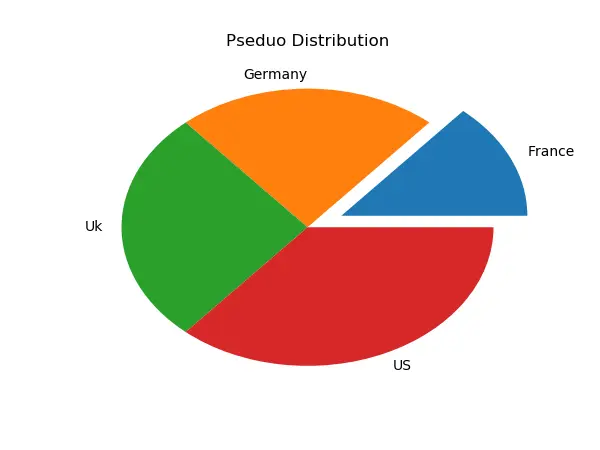Matplotlib Tutorial - Pie Chart
Jinku Hu
Feb 15, 2024
Matplotlib
Matplotlib Pie Chart
- Matplotlib Pie Chart
- Matplotlib Pie Chart in Clockwise Direction
- Matplotlib Pie Chart With Explode Slice

We will learn pie chart in this tutorial.
Matplotlib Pie Chart
# -*- coding: utf-8 -*-
import matplotlib.pyplot as plt
x = np.array([15, 25, 30, 40])
label = ["France", "Germany", "Uk", "US"]
plt.pie(x, labels=label)
plt.show()

Syntax
matplotlib.pyplot.pie(
x,
explode=None,
labels=None,
colors=None,
autopct=None,
pctdistance=0.6,
shadow=False,
labeldistance=1.1,
startangle=None,
radius=None,
counterclock=True,
wedgeprops=None,
textprops=None,
center=(0, 0),
frame=False,
hold=None,
data=None,
)
Parameters
| Name | Description |
|---|---|
label |
label text |
fontdict |
label text font dictionary, like family, color, weight and size |
labelpad |
Spacing in points between the label and the x-axis |
Matplotlib Pie Chart in Clockwise Direction
If the argument counterclock is set to be False, then the pie chart will be drawn in clockwise direction.
# -*- coding: utf-8 -*-
import matplotlib.pyplot as plt
x = np.array([15, 25, 30, 40])
label = ["France", "Germany", "Uk", "US"]
plt.pie(x, labels=label, counterclock=False)
plt.show()

Matplotlib Pie Chart With Explode Slice
The explode parameter controls the explode of slices in pie charts. It specifies the fraction of the radius with which offset each wedge.
# -*- coding: utf-8 -*-
import matplotlib.pyplot as plt
x = np.array([15, 25, 30, 40])
label = ["France", "Germany", "Uk", "US"]
plt.pie(x, labels=label, explode=(0.2, 0, 0, 0))
plt.show()

Enjoying our tutorials? Subscribe to DelftStack on YouTube to support us in creating more high-quality video guides. Subscribe
Author: Jinku Hu
Founder of DelftStack.com. Jinku has worked in the robotics and automotive industries for over 8 years. He sharpened his coding skills when he needed to do the automatic testing, data collection from remote servers and report creation from the endurance test. He is from an electrical/electronics engineering background but has expanded his interest to embedded electronics, embedded programming and front-/back-end programming.
LinkedIn Facebook